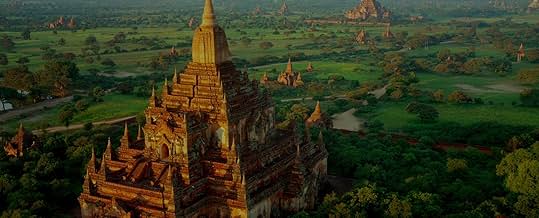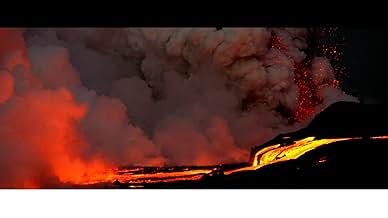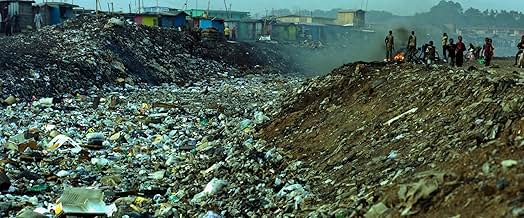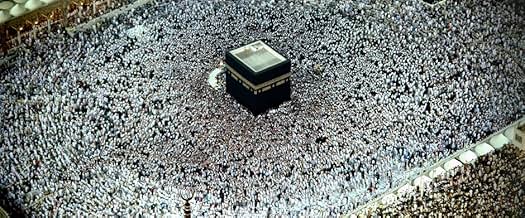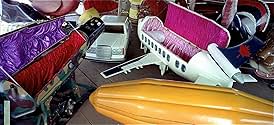VALUTAZIONE IMDb
8,4/10
39.271
LA TUA VALUTAZIONE
Girato per quasi cinque anni in venticinque paesi in cinque continenti, Samsara ci trasporta nei vari mondi di terreni sacri, zone disastrate, complessi industriali e meraviglie naturali.Girato per quasi cinque anni in venticinque paesi in cinque continenti, Samsara ci trasporta nei vari mondi di terreni sacri, zone disastrate, complessi industriali e meraviglie naturali.Girato per quasi cinque anni in venticinque paesi in cinque continenti, Samsara ci trasporta nei vari mondi di terreni sacri, zone disastrate, complessi industriali e meraviglie naturali.
- Regia
- Sceneggiatura
- Star
- Premi
- 1 vittoria e 6 candidature totali
Hiroshi Ishiguro
- Professor and Robot Clone: Japan
- (as Prof. Hiroshi Ishiguro)
Robert Henline
- U>S> Army Veteran: USA
- (as Staff Sergeant Robert Henline)
Tai Lihua
- Lead Dancer: 1000 Habds Goddess Dance, China
- (as Iai Lihua)
Collin Alfredo St. Dic
- Self
- (as Collin St. Dic)
- …
Recensioni in evidenza
Samsara is a depressingly accurate account of shallow human materialism, the widespread ungratefulness of our culture, and the incredible arrogance we continue to proudly possess. It features images too powerful to be computer generated and humanity too sincere to be fiction. Even though not a word is spoken, the film's images pack well over a thousand words, making Samsara, hypothetically, the longest work of poetry ever written.
The film chronicles the living conditions, the activities, and the day-to-day routines of many different people across twenty-five different countries. We never do get a true answer where we are at, which works as a method by the filmmakers, I assume, to prevent assumptions and judgments on the places and the people. We are shown many things in these evocative, unforgettable one-hundred minutes, and more depth and enigma than many will experience in their lifetime.
Shots are presented in crystal clear 70mm (if you're lucky enough to find a theater with the proper projector, but regular theater projectors should work efficiently enough), and we get a beautiful look at life in the slums, life in mansions placed delicately on the coastlines, and living conditions in countries such as Ethiopia and the United States. We see early religious rituals carried out, such as Tibetan monks engaged in their prayers or youthful baptisms, as well as contrasting lifestyles that involve dance mobs, suffering, and habitat destruction.
Director Ron Ficke's imagery and global cinematography is gripping and astounding, with long shots centered on characters, groups of people, or sometimes, aerial shots that feature a wide coverage of the surrounding land. My favorites are easily the time lapse sequences, sped up to breakneck speeds, sometimes showing haunting images of uncertainty or simply the fast paced nature of our world.
There are two sequences in particular that are the most haunting, and describing them will be no easy task. One involves a man sitting behind a desk, who begins to smear modeling clay on his face, before grabbing a tiny paint brush and stroking black and red paint all over himself as well. He begins to vigorously do both things at once, ripping clay off his face only to smear it back on, throw dust in his eyes, stick pencils in his face, etc. The long-shot becomes faster and faster, while jolting music plays in the background. The scene alone is more horrifying and surreal than anything I've seen in 2012, with the exception of Battle Royale.
The other lasts about five or six minutes, involving a barn full of chickens helplessly being sucked into a large, ominous tractor that will kill them and prepare them for tomorrow's meal. From birth to death, they live their entire life in fear and darkness, barely being able to move due to their heavy breasts and increasing plumpness. We too get a look at pot belly pigs, also too heavy to move, as they lay still and allow their piglets to drink milk from their nipples. We then see those same baby pigs hanging from a long line in the air at a condensed factory, being prepared into the bacon you will eat tomorrow for breakfast.
These images are nonetheless painful, but it all resorts back to what I called Samsara in the first paragraph - depressingly accurate, more haunting than fiction, and silently nudging us when we're left agape, saying, "hey, we're to thank for this." And we are. One of the final shots involves a beautiful mural of tiny colored specs being swept away in seconds by men brushing the table it is on. We are stunned that such a beautiful thing would be carelessly wiped away, but it all returns back to the idea that we were too given a beautiful slice of life and the world and we took it for granted and nearly destroyed it. We weren't able to take a second look.
Fricke paints Samsara, which is Sanskrit for "the ever turning wheel of life," as a film that sometimes can laud human activity and then turn around and condemn it. It is predominately a loose picture, that wants you to search for meaning in its images, but unlike Jean-Luc Godard's Film Socialisme, a horrible exercise in a similar field, we can see the images represent something and there's enough ambiguity that we are able to extract many different messages from the source material and are able to provide sufficient evidence to back up our claims. To put it simply, this is one of the best, most intellectually stimulating films of the last ten years.
Directed by: Ron Fricke.
The film chronicles the living conditions, the activities, and the day-to-day routines of many different people across twenty-five different countries. We never do get a true answer where we are at, which works as a method by the filmmakers, I assume, to prevent assumptions and judgments on the places and the people. We are shown many things in these evocative, unforgettable one-hundred minutes, and more depth and enigma than many will experience in their lifetime.
Shots are presented in crystal clear 70mm (if you're lucky enough to find a theater with the proper projector, but regular theater projectors should work efficiently enough), and we get a beautiful look at life in the slums, life in mansions placed delicately on the coastlines, and living conditions in countries such as Ethiopia and the United States. We see early religious rituals carried out, such as Tibetan monks engaged in their prayers or youthful baptisms, as well as contrasting lifestyles that involve dance mobs, suffering, and habitat destruction.
Director Ron Ficke's imagery and global cinematography is gripping and astounding, with long shots centered on characters, groups of people, or sometimes, aerial shots that feature a wide coverage of the surrounding land. My favorites are easily the time lapse sequences, sped up to breakneck speeds, sometimes showing haunting images of uncertainty or simply the fast paced nature of our world.
There are two sequences in particular that are the most haunting, and describing them will be no easy task. One involves a man sitting behind a desk, who begins to smear modeling clay on his face, before grabbing a tiny paint brush and stroking black and red paint all over himself as well. He begins to vigorously do both things at once, ripping clay off his face only to smear it back on, throw dust in his eyes, stick pencils in his face, etc. The long-shot becomes faster and faster, while jolting music plays in the background. The scene alone is more horrifying and surreal than anything I've seen in 2012, with the exception of Battle Royale.
The other lasts about five or six minutes, involving a barn full of chickens helplessly being sucked into a large, ominous tractor that will kill them and prepare them for tomorrow's meal. From birth to death, they live their entire life in fear and darkness, barely being able to move due to their heavy breasts and increasing plumpness. We too get a look at pot belly pigs, also too heavy to move, as they lay still and allow their piglets to drink milk from their nipples. We then see those same baby pigs hanging from a long line in the air at a condensed factory, being prepared into the bacon you will eat tomorrow for breakfast.
These images are nonetheless painful, but it all resorts back to what I called Samsara in the first paragraph - depressingly accurate, more haunting than fiction, and silently nudging us when we're left agape, saying, "hey, we're to thank for this." And we are. One of the final shots involves a beautiful mural of tiny colored specs being swept away in seconds by men brushing the table it is on. We are stunned that such a beautiful thing would be carelessly wiped away, but it all returns back to the idea that we were too given a beautiful slice of life and the world and we took it for granted and nearly destroyed it. We weren't able to take a second look.
Fricke paints Samsara, which is Sanskrit for "the ever turning wheel of life," as a film that sometimes can laud human activity and then turn around and condemn it. It is predominately a loose picture, that wants you to search for meaning in its images, but unlike Jean-Luc Godard's Film Socialisme, a horrible exercise in a similar field, we can see the images represent something and there's enough ambiguity that we are able to extract many different messages from the source material and are able to provide sufficient evidence to back up our claims. To put it simply, this is one of the best, most intellectually stimulating films of the last ten years.
Directed by: Ron Fricke.
This Film captures exactly the great practical joke that is the Human condition. There is just enough beauty to hold the ugliness in check. Life offers an enormous amount of unnecessary suffering and despair only to keep depression at bay with doses of beauty and charity and sacrifice.
Watching this enormously engrossing visual landscape the heart is both warmed and broken. The extremely insensitive and uncompromising modernity, all destined to disintegrate into the sands of time.
The Film lays out the beautiful coating of our Planet, but its underbelly is a constant and bizarre barrage of destruction and decay, some natural, some not so. It is a superficial existence with a lush and plush feeling, but also with a nagging reminder that things can get really ugly really fast.
This can be a hard watch, at times, and that is ironic because of some of the sumptuous images. However, it truly and without apology, offers those breathtaking portrayals along with the other side. That offensive, disturbing, and unattractive side. It seems to say, it's a colorful cruel joke this here Life, and the Filmmaker is in on it.
Watching this enormously engrossing visual landscape the heart is both warmed and broken. The extremely insensitive and uncompromising modernity, all destined to disintegrate into the sands of time.
The Film lays out the beautiful coating of our Planet, but its underbelly is a constant and bizarre barrage of destruction and decay, some natural, some not so. It is a superficial existence with a lush and plush feeling, but also with a nagging reminder that things can get really ugly really fast.
This can be a hard watch, at times, and that is ironic because of some of the sumptuous images. However, it truly and without apology, offers those breathtaking portrayals along with the other side. That offensive, disturbing, and unattractive side. It seems to say, it's a colorful cruel joke this here Life, and the Filmmaker is in on it.
S A M S A R A (my little review)
Ron Fricke, creator of the films Chaos and Baraka creates a tour de sympathy with his third, evocative, deeply stirring, film Samsara, a movie that points directly at personal responsibility, empowerment, and the price of thoughtless consumption, attachment, creation of ideologies to supplant a close relationship with life, but also a sort of raging against the dying of the light... and those who pay the price in society... the spirit of man, the animals we share this planet with, women, children and nature itself...
First off I would recommend this movie, this beautiful movie shot in 70mm full of color and feeling, that traverses the globe, and one's own heart. The film makes a Tibetan sand mandala of us all, blossoms a petal of truth within, then wipes away the dross...
I believe there is not only a definite thread to follow, but it's rather like seeing a natural singularity becoming split into the myriad activities of all humanity, the occurring entanglements, and then how it comes back together into the singularity within the heart, the seat of the soul. We always have a choice to diverge or to return to the inlet of our spiritual sea, the remembrance of our natural state as humanity... I believe the movie gets this across in such a beautiful and simple way that it's life changing. I don't think everyone will get it in the moment, I believe a seed will be planted in some, watered in others, and blossom in others, but for each where they stand, the movie will meet you where you are if you are open to its message.
Go see this movie.
Ron Fricke, creator of the films Chaos and Baraka creates a tour de sympathy with his third, evocative, deeply stirring, film Samsara, a movie that points directly at personal responsibility, empowerment, and the price of thoughtless consumption, attachment, creation of ideologies to supplant a close relationship with life, but also a sort of raging against the dying of the light... and those who pay the price in society... the spirit of man, the animals we share this planet with, women, children and nature itself...
First off I would recommend this movie, this beautiful movie shot in 70mm full of color and feeling, that traverses the globe, and one's own heart. The film makes a Tibetan sand mandala of us all, blossoms a petal of truth within, then wipes away the dross...
I believe there is not only a definite thread to follow, but it's rather like seeing a natural singularity becoming split into the myriad activities of all humanity, the occurring entanglements, and then how it comes back together into the singularity within the heart, the seat of the soul. We always have a choice to diverge or to return to the inlet of our spiritual sea, the remembrance of our natural state as humanity... I believe the movie gets this across in such a beautiful and simple way that it's life changing. I don't think everyone will get it in the moment, I believe a seed will be planted in some, watered in others, and blossom in others, but for each where they stand, the movie will meet you where you are if you are open to its message.
Go see this movie.
This film has tremendous power, not just from camera technique, but from the simple device of a human face steadily gazing at you. Time and time again humanity intrudes its collective face on you as life plays out across the Earth. Acceleration contrasts with contemplation; Earth rhythms overshadow human activity; no one seems to notice.
Samsara is beautiful, bizarre, and unforgettable. As the film progressed, my convictions as to what is 'for real' began to weaken. We may really be stuck in the same dream state. And always someone 'sees' back at you. Or is Samsara 'only a movie'?
This is not to say there is one correct way to experience or interpret Samara. Your reaction will reflect you only. At times uncomfortable, viewing Samsara is an experience worth having.
Samsara is beautiful, bizarre, and unforgettable. As the film progressed, my convictions as to what is 'for real' began to weaken. We may really be stuck in the same dream state. And always someone 'sees' back at you. Or is Samsara 'only a movie'?
This is not to say there is one correct way to experience or interpret Samara. Your reaction will reflect you only. At times uncomfortable, viewing Samsara is an experience worth having.
I just saw a screening of Samsara at the TIFF, at the brilliant TIFF Lightbox theatre.
Wow.
A film that took 5 years to make and co-ordinate. Shot in Panarama 70mm, across 26 countries, needing major government and regulatory clearances, having to wait for certain seasons or lunar phases to get the light to hit the way director Fricke wanted...carefully strung together with a massive 7.1 surround sound design and music score from Michael Stearns, Marcello de Francisci, and Lisa Gerrard (of Dead Can Dance).
The 70mm negative has been digitally scanned and oversampled at 8k resolution (much like the 'Baraka' Blu-ray); the TIFF Lightbox theatre installed a brand new Christie 4k projector (Christie Projection Systems rushed the projector before its release to the market specifically for this event) making it the first true 4k screening of it's kind.
From sweeping landscapes to time-lapse sequences of the night sky and from exclusive looks into the processing of food to the consumption and effects it has on the human body, Samsara is nothing short of astounding. Modern technology, production lines, and human robotics are juxtaposed against a backdrop of deserts, garbage mounds as far as the eye can see, and traffic congestion in modern centres. The time-lapse footage is simply transcendent. In fact, I caught myself questioning the reality of some of the landscape vistas and night skyline montages...they looked so hyper-real that I thought they must have come from a CG lab somewhere. Simply astonishing. The richness, depth and clarity of colour and image achieved within the processes utilized gives birth to the most beautiful visual meditation that I have ever witnessed.
As one film journalist noted, "That Samsara is instantly one of the most visually-stunning films in the history of cinema is reason enough to cherish it, but Fricke and co-editor Mark Magidson achieve truly profound juxtapositions, brimming with meaning and emotion. It sounds preposterous, but it's true: In 99 minutes, Samsara achieves something approaching a comprehensive portrait of the totality of human experience. If you're even remotely fond of being alive, Samsara is not to be missed."
If you ever come across the chance to see this film in a decent theatre, run, and let your eyeballs (and earholes) feast upon its brilliance.
Wow.
A film that took 5 years to make and co-ordinate. Shot in Panarama 70mm, across 26 countries, needing major government and regulatory clearances, having to wait for certain seasons or lunar phases to get the light to hit the way director Fricke wanted...carefully strung together with a massive 7.1 surround sound design and music score from Michael Stearns, Marcello de Francisci, and Lisa Gerrard (of Dead Can Dance).
The 70mm negative has been digitally scanned and oversampled at 8k resolution (much like the 'Baraka' Blu-ray); the TIFF Lightbox theatre installed a brand new Christie 4k projector (Christie Projection Systems rushed the projector before its release to the market specifically for this event) making it the first true 4k screening of it's kind.
From sweeping landscapes to time-lapse sequences of the night sky and from exclusive looks into the processing of food to the consumption and effects it has on the human body, Samsara is nothing short of astounding. Modern technology, production lines, and human robotics are juxtaposed against a backdrop of deserts, garbage mounds as far as the eye can see, and traffic congestion in modern centres. The time-lapse footage is simply transcendent. In fact, I caught myself questioning the reality of some of the landscape vistas and night skyline montages...they looked so hyper-real that I thought they must have come from a CG lab somewhere. Simply astonishing. The richness, depth and clarity of colour and image achieved within the processes utilized gives birth to the most beautiful visual meditation that I have ever witnessed.
As one film journalist noted, "That Samsara is instantly one of the most visually-stunning films in the history of cinema is reason enough to cherish it, but Fricke and co-editor Mark Magidson achieve truly profound juxtapositions, brimming with meaning and emotion. It sounds preposterous, but it's true: In 99 minutes, Samsara achieves something approaching a comprehensive portrait of the totality of human experience. If you're even remotely fond of being alive, Samsara is not to be missed."
If you ever come across the chance to see this film in a decent theatre, run, and let your eyeballs (and earholes) feast upon its brilliance.
Lo sapevi?
- QuizFor several years the filmmakers attempted to secure permission to film in North Korea, but were ultimately denied access.
- ConnessioniFeatured in Lucy (2014)
- Colonne sonoreBali Dance
and "1000 Hands"
Based on "Omaha Clear Skies"
From the CD "Star Songs" © 2010
By Bonnie Jo Hunt & Ron Sunsinger
Bonnie Jo Productions & Sunsinger Productions
I più visti
Accedi per valutare e creare un elenco di titoli salvati per ottenere consigli personalizzati
Dettagli
- Data di uscita
- Paesi di origine
- Siti ufficiali
- Lingua
- Celebre anche come
- Luân Hồi
- Luoghi delle riprese
- Aziende produttrici
- Vedi altri crediti dell’azienda su IMDbPro
Botteghino
- Budget
- 4.000.000 USD (previsto)
- Lordo Stati Uniti e Canada
- 2.672.413 USD
- Fine settimana di apertura Stati Uniti e Canada
- 76.222 USD
- 26 ago 2012
- Lordo in tutto il mondo
- 4.426.444 USD
- Tempo di esecuzione
- 1h 42min(102 min)
- Colore
- Mix di suoni
- Proporzioni
- 2.39 : 1
Contribuisci a questa pagina
Suggerisci una modifica o aggiungi i contenuti mancanti




